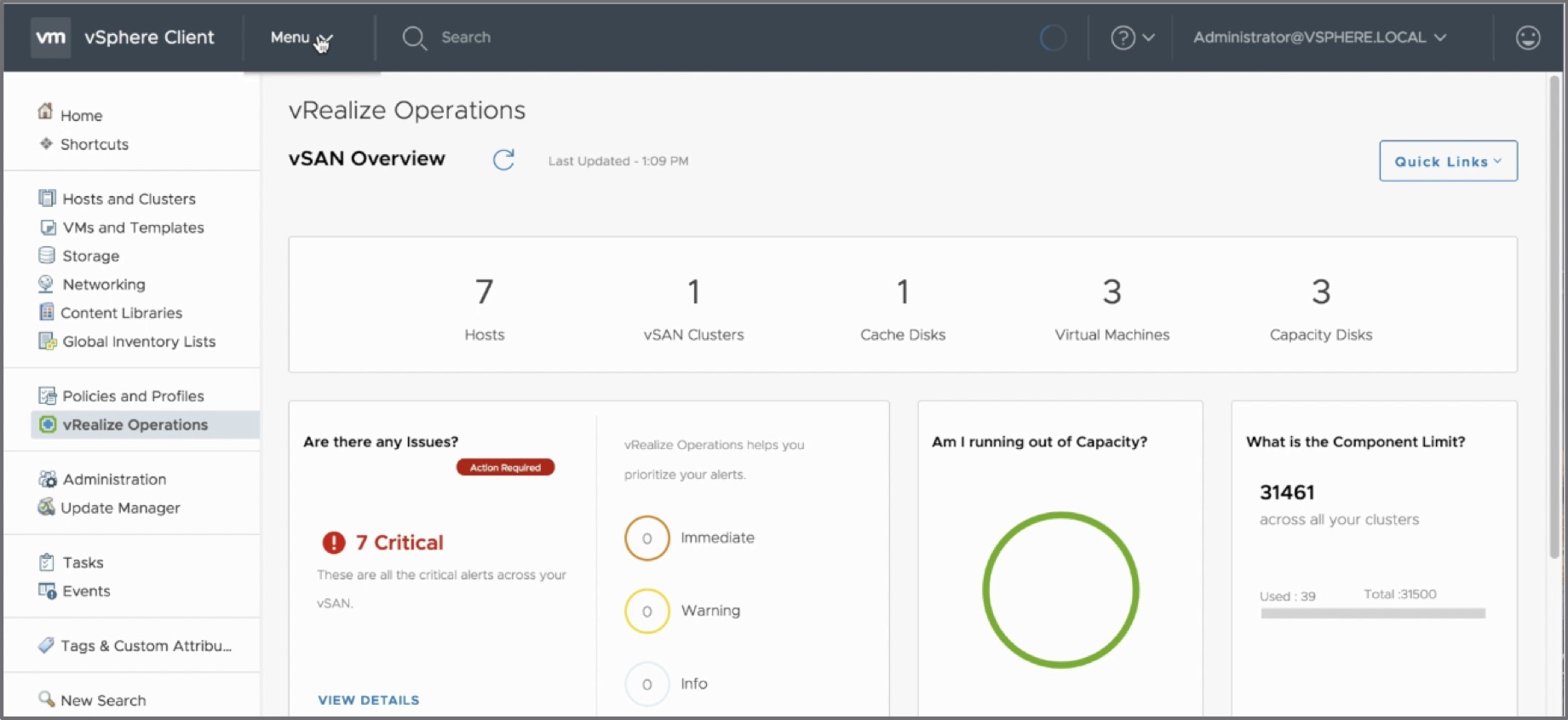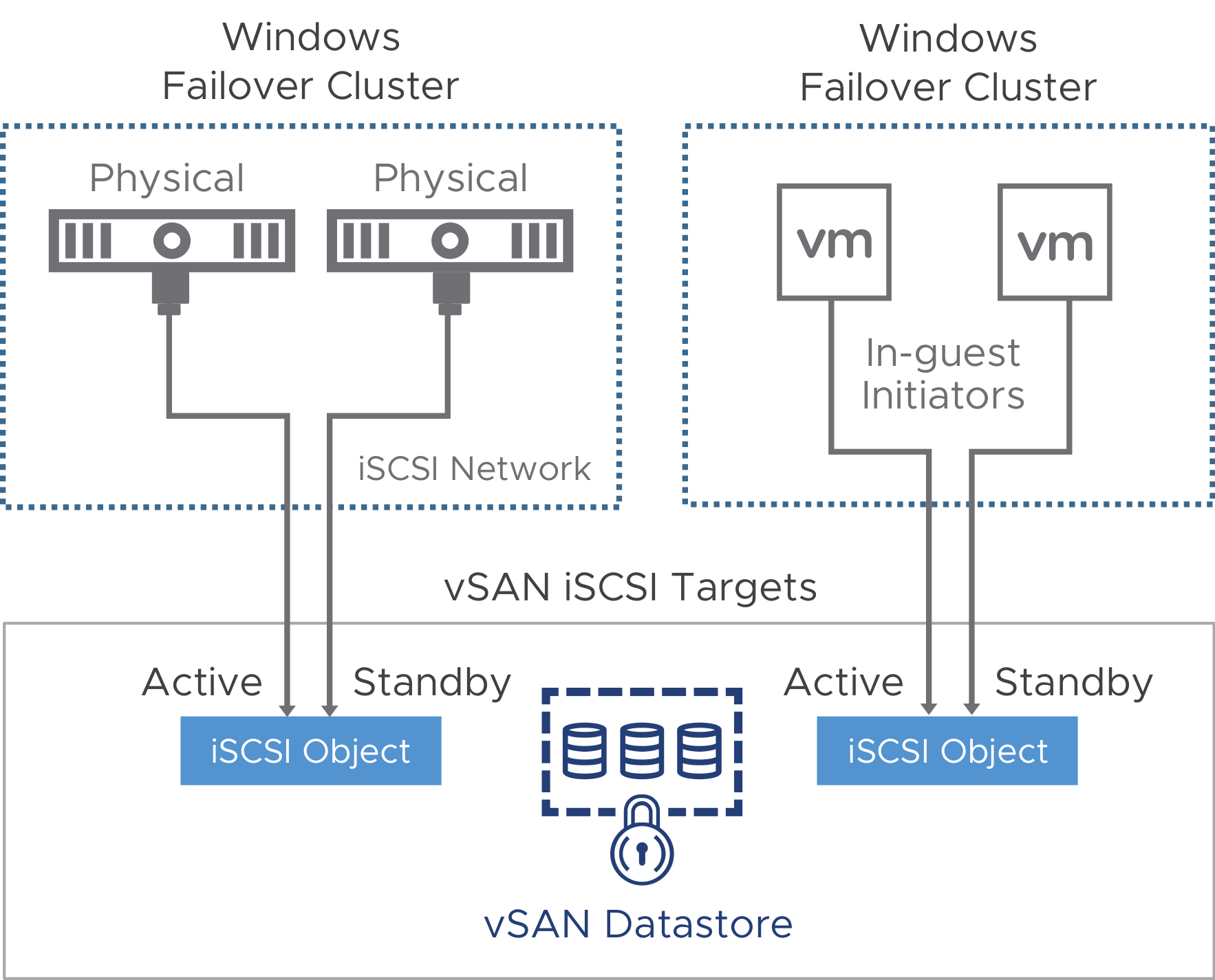
In my Previous post have mentioned about new vSAN version , lets find out all the new features availabel with VMware vSAN 6.7 .

4Kn drive support
vSAN 6.7 supports 4K Native disk drives. 4Kn drives provide higher capacity densities compared to 512n. This support enables you to deploy storage heavy configurations using 4Kn drives with higher capacity points.
vSphere and vSAN FIPS 140-2 validation
vSAN 6.7 encryption has been validated for the Federal Information Processing Standard 140-2. FIPS validated software modules have numerous advantages over special purpose hardware, because they can be executed on a general-purpose computing system, providing portability and flexibility. You can configure a vSAN host using any HCL-compatible set of drives in thousands of form factors, capacities and features, while maintaining data security using FIPS 140-2 validated modules.
HTML interface
The HTML5-based vSphere Client ships with vCenter Server alongside the Flex-based vSphere Web Client. The vSphere Client uses many of the same interface terminologies, topologies, and workflows as the vSphere Web Client. You can use the new vSphere Client, or continue to use the vSphere Web Client.
vRealize Operations within vCenter Server
The vSphere Client includes an embedded vRealize Operations plugin that provides basic vSAN and vSphere operational dashboards. The plugin provides a method to easily deploy a new vROps instance or specify an existing instance in the environment, one of which is required to access the dashboards. The vROps plugin does not require any additional vROps licensing.

vSAN on-disk format to version 6.0
Data evacuation option is available with upgrade of version 6 .
Windows Server Failover Clustering support
vSAN 6.7 supports Windows Server Failover Clustering by building WSFC targets on top of vSAN iSCSI targets. vSAN iSCSI target service supports SCSI-3 Persistent Reservations for shared disks and transparent failover for WSFC. WSFC can run on either physical servers or VMs.

Intelligent site continuity for stretched clusters
In the case of a partition between the preferred and secondary data sites, vSAN 6.7 will intelligently determine which site leads to maximum data availability before automatically forming quorum with the witness. The secondary site can operate as the active site until the preferred site has the latest copy of the data. This prevents the VMs from migrating back to the preferred site and losing locality of data reads.
Witness traffic separation for stretched clusters
You now have the option to configure a dedicated VMkernel NIC for witness traffic. The witness VMkernel NIC does not transmit any data traffic. This feature enhances data security by isolating the witness traffic from vSAN data traffic. It also is useful when the witness NIC has less bandwidth and latency compared to the data NICs.
Efficient inter-site resync for stretched clusters. Instead of resyncing all copies across the inter-site link for a rebuild or repair operation, vSAN 6.7 sends only one copy and performs the remaining resyncs from that local copy. This reduces the amount of data transmitted between sites in a stretched cluster.
Fast failovers when using redundant vSAN networks
When vSAN 6.7 is deployed with multiple VMkernel adapters for redundancy, failure of one of the adapters will result in immediate failover to the other VMkernel adapter. In prior releases, vSAN waits for TCP to timeout before failing over network traffic to healthy VMkernel adapters.
Adaptive resync for dynamic management of resynchronization traffic
Adaptive resynchronization speeds up time to compliance (restoring an object back to its provisioned failures to tolerate) by allocating dedicated bandwidth to resynchronization I/O. Resynchronization I/O is generated by vSAN to bring an object back to compliance. While minimum bandwidth is guaranteed for resynchronization I/Os, the bandwidth can be increased dynamically if there is no contention from the client I/O. Conversely, if there are no resynchronization I/Os, client I/Os can use the additional bandwidth.
Consolidation of replica components
During placement, components belonging to different replicas are placed in different fault domains, due to the replica anti-affinity rule. However, when the cluster is running at high capacity utilization and objects must be moved or rebuilt, either because of maintenance operation or failure, enough FDs might not be available. Replica consolidation is an improvement over the point fix method used in vSAN 6.6. Whereas point fix reconfigures the entire RAID tree (considerable data movement), replica consolidation moves the least amount of data to create FDs that meet the replica anti-affinity requirement.
Host pinning for shared nothing applications
vSAN Host Pinning is a new storage policy that adapts the efficiency and resiliency of vSAN for next-generation, shared-nothing applications. With this policy, vSAN maintains a single copy of the data and stores the data blocks local to the ESXi host running the VM. This policy is offered as a deployment choice for Big Data (Hadoop, Spark), NoSQL, and other such applications that maintain data redundancy at the application layer. vSAN Host Pinning has specific requirements and guidelines that require VMware validation to ensure proper deployment. You must work with your VMware representative to ensure the configuration is validated before deploying this policy.
Enhanced diagnostics partition (coredump) support
vSAN 6.7 automatically resizes the coredump partition on USB/SD media if there is free space on the device, so that coredumps and logs can be persisted locally. If there is insufficient free space or no boot device is present, then no re-partitioning is performed.
vSAN destaging optimizations
vSAN 6.7 includes enhancements to improve the speed at which data is written from the caching tier to the capacity tier. These changes will improve the performance of VM I/Os and resynchronization speed.
Health check additions and improvements
vSAN 6.7 includes several new health checks and improvements to the health service for better proactive and reactive guidance.
vSAN Support insight. vSAN 6.7 has improved customer support by providing anonymized environmental data to VMware Global Support Services (GSS) for proactive support and faster troubleshooting. Customer enrollment in the Customer Experience Improvement Program (CEIP) is required to receive this benefit.
Swap object thin provisioning and policy inheritance improvements
VM swap files in vSAN 6.7 inherit the VM storage policy for all settings, including thin provisioning. In prior versions, the swap file was always thick provisioned.
VMware Official Video walkthrough of both What’s news as well as a general technical overview
Since it is release only two days before I am looking deep to share more blog posts on vSAN 6.7